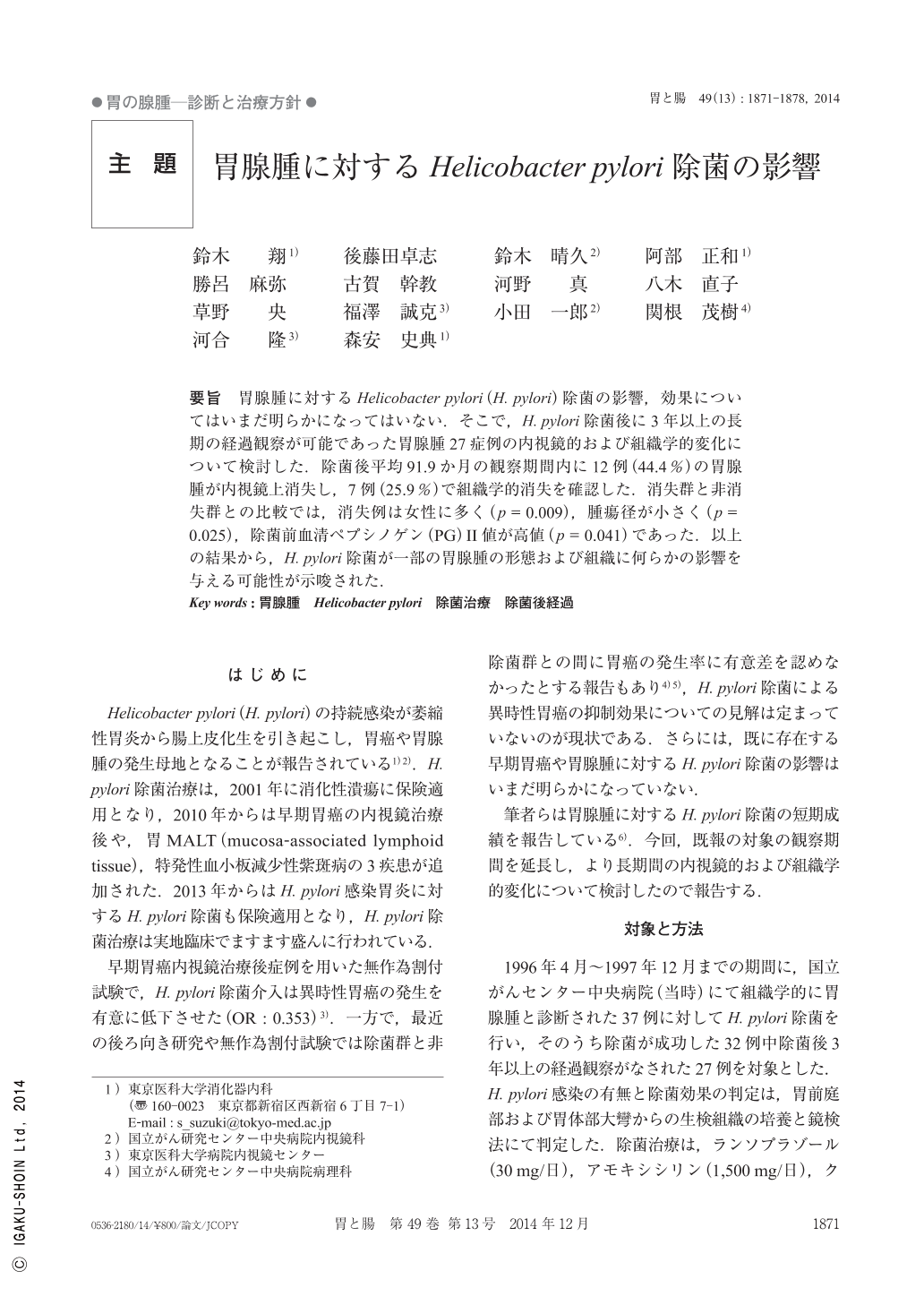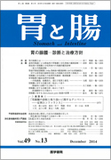Japanese
English
- 有料閲覧
- Abstract 文献概要
- 1ページ目 Look Inside
- 参考文献 Reference
要旨 胃腺腫に対するHelicobacter pylori(H. pylori)除菌の影響,効果についてはいまだ明らかになってはいない.そこで,H. pylori除菌後に3年以上の長期の経過観察が可能であった胃腺腫27症例の内視鏡的および組織学的変化について検討した.除菌後平均91.9か月の観察期間内に12例(44.4%)の胃腺腫が内視鏡上消失し,7例(25.9%)で組織学的消失を確認した.消失群と非消失群との比較では,消失例は女性に多く(p=0.009),腫瘍径が小さく(p=0.025),除菌前血清ペプシノゲン(PG)II値が高値(p=0.041)であった.以上の結果から,H. pylori除菌が一部の胃腺腫の形態および組織に何らかの影響を与える可能性が示唆された.
Backgrounds and Aims : Helicobacter pylori infection causes gastric adenoma and gastric cancer through the development of chronic atrophic gastritis and intestinal metaplasia. The effect of H. pylori eradication on existing gastric neoplasia is unknown. This study investigated the efficacy of H. pylori eradication therapy on existing gastric adenoma.
Material and Methods : We prospectively reviewed 27 patients with gastric adenoma who underwent H. pylori eradication therapy between April and December 1997. We evaluated the endoscopic and histological changes of gastric adenoma cases for≧3 years and analyzed the relationship between endoscopic and histological changes and clinicopathological factors, including follow-up periods, age, gender, serum pepsinogen level, serum H. pylori antibody level, lesion size and location, and phenotypic expression, using univariate analysis.
Result : The total mean follow-up period was 91.9 months. Twelve lesions(44.4%)were not visible by endoscopy, and seven lesions(25.9%)disappeared in both endoscopy and histological examination. The mean period of endoscopic disappearance was 21.8 months after H. pylori eradication therapy. Fourteen(51.9%)lesions remained unchanged by endoscopy. Of these, six(22.2%)were diagnosed as intramucosal cancer at follow-up and were endoscopically treated. Univariate analysis revealed that gender(p=0.009), lesion size(p=0.025), and serum pepsinogen II level(p=0.0041)before H. pylori eradication therapy were significantly associated with the disappearance of lesions, both endoscopically and histologically.
Conclusions : H. pylori eradication therapy may contribute to the improvement or disappearance of gastric adenoma. Therefore, H. pylori eradication therapy could be the initial therapy for gastric adenoma.

Copyright © 2014, Igaku-Shoin Ltd. All rights reserved.


